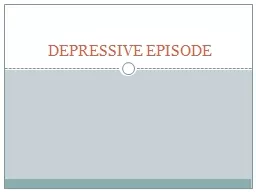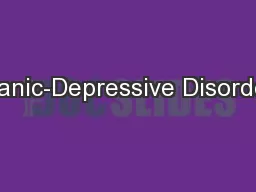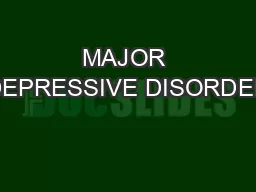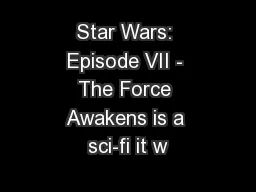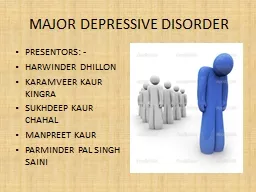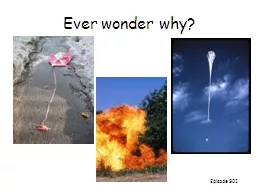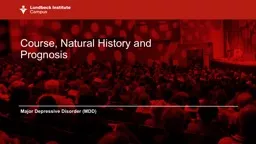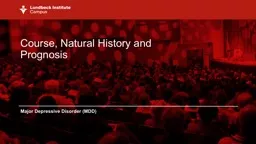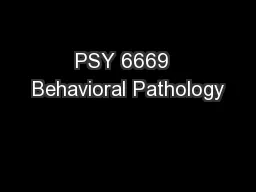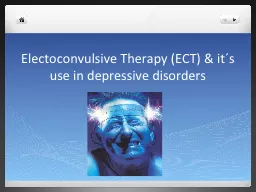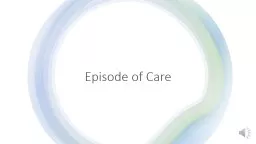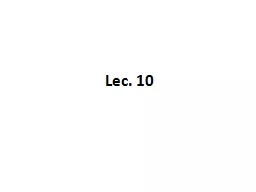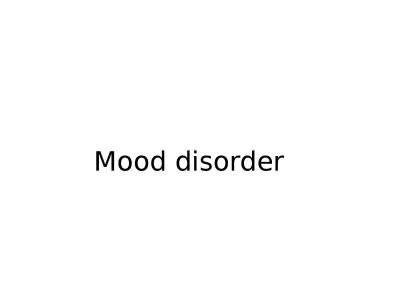PPT-DEPRESSIVE EPISODE
Author : liane-varnes | Published Date : 2017-01-30
Definition Depression also known as depressive disorders or unipolar depression is a mental illness characterized by a profound and persistent feeling of sadness
Presentation Embed Code
Download Presentation
Download Presentation The PPT/PDF document "DEPRESSIVE EPISODE" is the property of its rightful owner. Permission is granted to download and print the materials on this website for personal, non-commercial use only, and to display it on your personal computer provided you do not modify the materials and that you retain all copyright notices contained in the materials. By downloading content from our website, you accept the terms of this agreement.
DEPRESSIVE EPISODE: Transcript
Download Rules Of Document
"DEPRESSIVE EPISODE"The content belongs to its owner. You may download and print it for personal use, without modification, and keep all copyright notices. By downloading, you agree to these terms.
Related Documents

